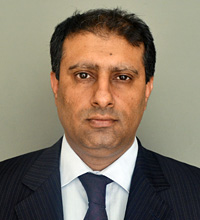
View this edition in our enhanced digital edition format with supporting visual insight and information.
What can family enterprises learn from a book titled, Who Moved My Cheese? Thanks to this week’s contributor, Ashvini Chopra, for sharing a case study that applies the book’s lessons about change and adaptability to a recent scenario Ashvini encountered with one of his family business clients.
“You know that she is from a big city, and therefore she caused my brother-in-law, Raj, to move from our family home to the metropolis.” Thus spoke Rita, whom I was interviewing as part of my engagement to draw up a family constitution.
Later in a discussion, the patriarch, Suraj, was expounding about his foresight in getting his son Raj to move to the metropolis and how that move was ensuring continued profitability for the group as opposed to Raj’s cousins who were in the same business, but who had continued in the same town.
These two conversations threw me back to one of the earliest business books I read – a lovely little book by Dr. Spencer Johnson called Who Moved My Cheese? I was doing a short duration course, figuring out what further to do with my life, and had picked up this book as an interesting read. As it happened, sometime thereafter, I had the opportunity to do an industrial visit along with a luncheon with the general manager of the factory. During the luncheon, being a novice in the field and still grasping business fundamentals, I gathered the courage to ask, “Sir, this town is not near your raw material sources, nor near a major market, and does not enjoy any tax breaks, then why did you choose to place your factory here? Does it not drive up costs?” Since I had gathered the courage, not getting dissuaded by his initial parrying, I got the gentleman to offer a very candid answer: “Our promoters are from this town, so they chose to place the factory here.”
His comment was an interesting insight for me, but one that I did not make much sense of at the time, nor did I connect it to Cheese Station A in said book. And there it lay buried, until the conversation with Rita and her father-in-law suddenly opened the lock on my understanding.
The fundamentals of a successful business, and what sustains it, continue to change, and unless these changes are understood, they wipe away the family business when they emerge. An entrepreneur starts a business with an idea and focuses heavily on execution of that idea. Often with little funding and short on managerial resources, the entrepreneur wears multiple hats, e.g., the factory, sales and HR managers, and any other hats that you can think of. At this early stage, being close to the centre of production makes sense, and an office away from the factory seems a luxury. Branch offices serve more as sales outlets than proper offices.
Dreaming big, these entrepreneurs provide the best possible education for their children, who, when they grow up and join the business, usually want to live in big cities. This sets off a clash, like the one between Rita and her sister-in-law, with the older generation terming this a life-style choice — not realizing, unlike the father-in-law, that it is a business decision. The younger generation usually realizes that the scale of the business requires a move away from the factory and a relocation that allows contact with banks, government centres, and logistic centres to take the business to the next level. This means a movement to a metropolis where it is easier to raise capital and to be on the lookout for new ideas. The production centres, however, can remain in the same place where they have always been.
In the example above, when I spoke to the individual whose wife, allegedly, made him move to the metro, his reasoning was similar to his father’s. Lifestyle choice, from his perspective, was continuing to live in the same town where the business started, while the demand of the business was that he not remain shackled to past practices and way of life.
This brings me back to Who Moved My Cheese and the four main characters whom I describe below:
- Sniff – who sniffs out change early.
- Scurry – who scurries into action once change has happened.
- Hem – who faces negative anxiety and who denies and resists change, fearing it will lead to something worse.
- Haw – who is afraid of change initially but learns to adapt in time when seeing that change leads to something better.
At any time, business families will be comprised of all four characters, and the balancing of their perspectives and biases will need to be recognised and managed.
In our example, clearly the patriarch of the family, Suraj, is Sniff. He sniffed out the change early and caused his son Raj (Scurry) to go in search of new cheese. Raj’s wife was Haw (she had her own angst about leaving the palatial villa in which they lived and having to accommodate herself in a much smaller house in the Metropolis), and Rita and her husband were Hem.
Hem typically uses some (or all) of the following statements:
- This is what we have always done.
- I grew up here, and this is where we have always lived.
- This is the way we have always done things.
In the book, and usually in family discussions, all these statements express the desire to maintain a lifestyle that the family members have always enjoyed and are comfortable with, but over time the comfort zone becomes a maze from which it is difficult to escape.
The end of the book has Hem continuing to be where he was, and Haw resolving never again to be satisfied at the new cheese station, which he has located with great difficulty. However, Raj (our Scurry counterpart), as a member of the next generation, currently does not suffer this change. It is quite possible that over time, Raj will grow comfortable with it and will eventually change to a Hem or a Haw, rather than be like Suraj and change from a Scurry to a Sniff.
However, in working with family businesses, I have come to realise that none of the character traits is negative, and business families need all the four: Sniff, Scurry, Haw and Hem. The case has always been made in favour of the Sniff, Scurry and Haw, and on how family businesses need to change and adapt, and therefore develop systems which encourage Sniffs and Scurries to develop new businesses, and to take Haws along.
However, Hem is the person who continues to hold down the fort in the family’s older businesses, which may be cash cows and not a financial drain. Hem roots the family in tradition and values and makes them consider their moves that much more closely. Families, like the characters in Who Moved My Cheese?, need to continually define where they are and where they are going and to communicate with the Hems constantly – making sure that the Hems become Haws who eventually support change, and do not remain Hems.
So, encourage your clients to celebrate the presence of Hems, to see them as an opportunity and not a threat, and to design performance management systems to include them. But above all develop communication patterns early on to ensure that Hems become Haws.
About the contributor
 Ashvini Chopra is senior vice president, family office, at Bennett Coleman in Mumbai, India. He has more than 24 years of experience — eight years have been as an estate planning professional and more than seven years as a private banker. His focus areas are succession planning, tax planning, wealth management, lifestyle management, entity management, and advising on board constitutions. Ashvini’s previous FFI Practitioner article, “Selling the Family Business? Set up a Family Office First!” was one of the five most read in 2017. A member of FFI and STEP, Ashvini can be reached at ashvinichopra@gmail.com.
Ashvini Chopra is senior vice president, family office, at Bennett Coleman in Mumbai, India. He has more than 24 years of experience — eight years have been as an estate planning professional and more than seven years as a private banker. His focus areas are succession planning, tax planning, wealth management, lifestyle management, entity management, and advising on board constitutions. Ashvini’s previous FFI Practitioner article, “Selling the Family Business? Set up a Family Office First!” was one of the five most read in 2017. A member of FFI and STEP, Ashvini can be reached at ashvinichopra@gmail.com.

View this edition in our enhanced digital edition format with supporting visual insight and information.





